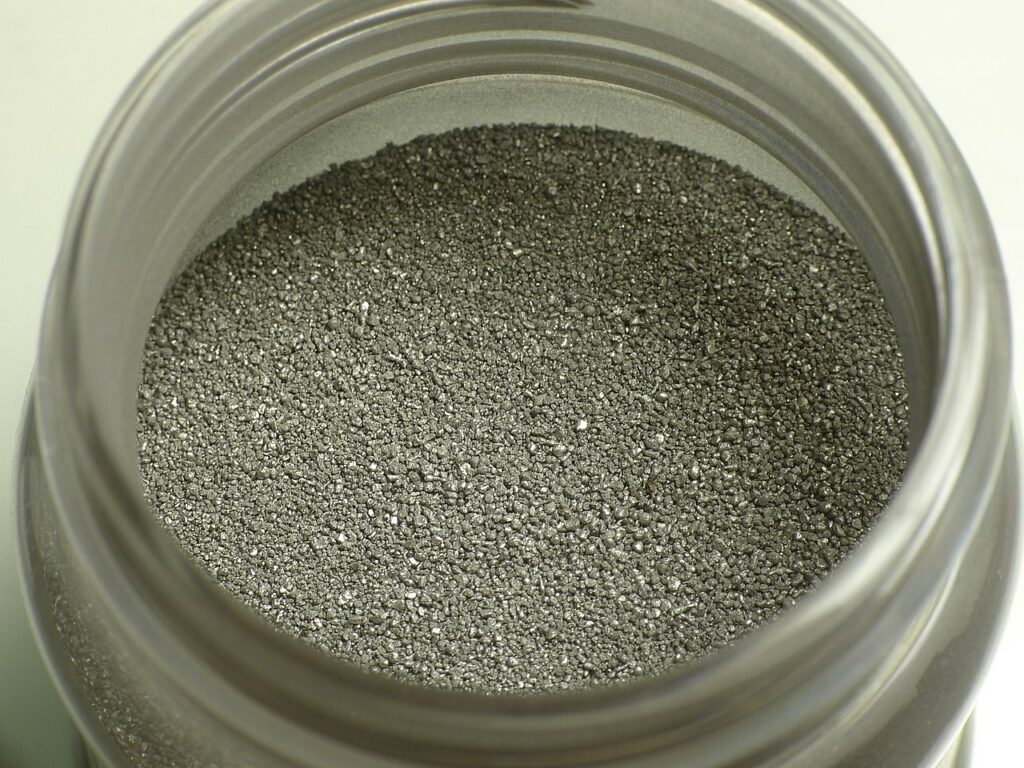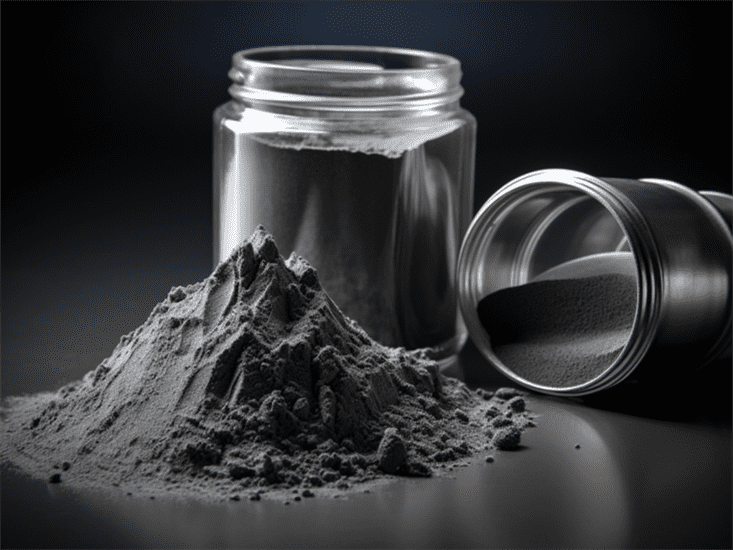概述 MIM 技术
金属注射成型(MIM),又称粉末注射成型(PIM),是一种先进的制造工艺,用于大批量生产小型、复杂的金属零件。
MIM 将注塑成型的设计灵活性和精度与机加工金属零件的强度和性能相结合。它可以利用先进的金属合金,经济高效地生产出具有良好机械性能的复杂部件。
金属射出成型工艺首先使用由细金属粉末与粘合剂材料混合而成的原料。然后使用注塑成型设备将原料注入模具。粘合剂将金属粉末固定在一起,并为成型提供流动性。
成型后,通过脱脂工艺将粘合剂从成型的绿色部件中去除。脱脂后的部件称为棕色部件,然后在高温下烧结,将金属颗粒熔结在一起,形成一个坚固的金属部件,其材料特性接近于锻造部件。
MIM 适合使用各种金属(如不锈钢、低合金钢、工具钢、磁性合金、超级合金、钛合金和钨重合金)制造小型复杂零件。它结合了注塑成型的多功能性和粉末冶金的材料灵活性。
MIM 技术的主要优点包括
- 可大批量生产复杂、精细的金属部件
- 近净成形制造减少了浪费并最大限度地降低了加工成本
- 接近锻造材料的良好机械性能
- 多种金属可供选择,包括不锈钢、工具钢和超级合金
- 可将部件整合为单一组件
- 产量高,单位成本低
- 自动化流程的一致性和可重复性
MIM 技术是小型复杂零件的理想选择,如医疗设备、枪械部件、手表部件和汽车零件等,这些零件要求精确、强度高、经济实用和大规模生产。

MIM 技术的应用和用途
MIM 技术广泛应用于各行各业,可高效地大批量制造小型、高精度金属零件。以下是 MIM 技术的一些主要应用领域和用途:
| 行业 | 应用和用途 |
|---|---|
| 医疗和牙科 | 手术器械、牙科植入物、整形外科植入物、导管组件、针管、手术刀手柄、镊子、夹子、手术紧固件、可重复使用的手术器械 |
| 枪械与防卫 | 扳机、击锤、保险装置、弹射器、弹夹、弹壳、弹丸、弹头部件 |
| 汽车 | 燃油系统部件、油泵齿轮、叶轮、阀门、涡轮增压器部件、电子部件、转向/传动部件 |
| 航空航天 | 涡轮叶片、叶轮、齿轮齿、衬套、泵部件、发动机部件 |
| 消费品 | 手表部件、珠宝配件、餐具、剪刀、剃须刀、手工工具、拉链部件 |
| 工业硬件 | 旋钮、配件、紧固件、插座、连接器、喷头、喷嘴 |
| 电子产品 | 连接器、开关、微电机、微型齿轮、屏蔽罩、电感器、磁铁转子 |
** 针对特定应用的金属射出成型的优势**
- 精密:适用于微型零件,如具有复杂几何形状的医疗设备或手表部件。
- 强度:适用于需要高强度的部件,如汽车涡轮增压器和枪械扳机。
- 耐磨性:由工具钢合金制成的 MIM 零件具有出色的耐磨性,使用寿命长。
- 耐腐蚀:不锈钢 MIM 零件耐腐蚀,可用于可重复使用的手术工具、植入物等。
- 高硬度:金属射出成型可以生产硬度超过 40 HRC 的零件,如刀具、工具、模具等。
- 电气性能:MIM 用于制造电感器、电机转子等软磁元件。
- 成本效益高:与机加工相比,大批量生产可大幅降低零件成本。
MIM 设备和工具指南
MIM 工艺使用的主要设备包括注塑成型机、脱脂和烧结炉。以下是相关概述:
| 设备 | 目的 | 考虑因素 |
|---|---|---|
| 注塑机 | 在加热和加压的情况下,将 MIM 原料注入模腔 | 锁模力、注塑速度和压力能力、精度和重复性、控制和自动化功能。 |
| 粘合剂去除炉 | 用热或化学方法去除模制件上的粘合剂 | 温度范围、气氛控制、装载量、排胶均匀性。 |
| 烧结炉 | 通过加热至接近熔点,使去骨的棕色部件致密化 | 温度范围、气氛控制、加热均匀性、批量能力,全自动为佳。 |
| 模具和工具 | 成型腔将 MIM 原料成型为所需的几何形状 | 可承受成型压力和温度,加工精密,表面光洁度好,可快速加热/冷却。 |
| 原料设备 | 将金属粉末和粘合剂混合成均匀的 MIM 原料 | 混合器、温度控制器、造粒机。 |
| 二次加工 | 机械加工、连接、表面处理等附加步骤 | 根据零件需要,如数控加工、焊接、电火花加工、涂层。 |
| 质量控制 | 测试原料、烧结部件的性能 | 粉末形态、密度、流速、粘度分析仪、机械测试设备。 |
| 安全设备 | 安全处理细粉末 | 手套、呼吸器、集尘系统。 |
设计和性能标准
- ISO 21227 - 金属注射成型用粉末
- ASTM F2885 - 金属注射成型工艺
- MPIF 35 - MIM 原料标准
- ASTM E2781 - MIM 拉伸试验试样设计
- ISO 2740 - 烧结金属注射成型零件
成本细目
金属射出成型生产的典型成本分布为
- 原材料(粉末 + 粘合剂):50-60%
- 制造(成型 + 脱脂 + 烧结):25-35%
- 二次加工:5-10%
- 质量控制: 2-5%
- 工程(研发、设计):2-5%
供应商和定价
以下是一些全球领先的 MIM 设备供应商及其价格范围:
| 供应商 | 产品类别 | 价格范围 |
|---|---|---|
| 阿尔堡 | 注塑机 | $100,000 – $500,000 |
| 印美 MIM | MIM 原料和服务 | 每公斤 $5 - $50 |
| Elnik | 脱胶和烧结炉 | $50,000 – $1,000,000 |
| FineMIM | 端对端 MIM 生产 | 每个部件 $0.5 - $5 |
| 帕马泰克 | 金属粉末雾化 | $250,000 – $1,000,000 |
| 子午线技术公司 | 工具和模具设计 | $5,000 – $100,000 |
安装、运行和维护
金属射出成型是一种自动化工艺,但需要精心安装、操作和维护才能达到最佳性能:
| 活动 | 详细信息 |
|---|---|
| 安装 | 精确校准注塑机和模具。校准温度控制器。试生产 |
| 运行 | 确保原料质量控制符合标准。实现注塑压力、温度和速度等工艺参数。 |
| 维护 | 为成型机机筒、螺钉和模具安排预防性维护。维护排胶炉的气氛。校准仪器。 |
| 清洁 | 运行后按照 SOP 清洁机筒。确保炉子或管道内无粉末堆积。使用设计的介质清洗模具。 |
| 安全 | 处理细粉末时要穿戴个人防护设备。妥善处理化学粘合剂。维护前要冷却熔炉。 |
| 培训 | 对机器和熔炉操作员进行程序培训。举办安全和维护方面的进修课程。 |
| 优化 | 调整工艺参数,直到零件质量稳定在规格范围内。保存详细的工艺记录。 |
典型维护活动和频率
| 活动 | 频率 |
|---|---|
| 注塑机喷嘴清洗 | 每批次 |
| 模具抛光 | 每周 |
| 机筒清洗 | 每月 |
| 粘结剂清除烘箱气氛检查 | 每月 |
| 烧结炉热电偶校准 | 6 个月 |
| 模流研究 | 每年 |
如何选择 MIM 供应商
要想以合理的成本按时获得优质零件,选择一家有实力的 MIM 供应商至关重要。以下是需要考虑的重要因素:
| 系数 | 标准 |
|---|---|
| 技术能力 | 先进设备、多年经验、专业技术 |
| 材料选择 | 不锈钢、工具钢、钨合金等各种材料 |
| 二次加工 | 内部加工、连接和涂层设备 |
| 质量体系 | ISO 9001 认证、质量控制和检验程序 |
| 生产能力 | 稳定的大批量生产能力 |
| 准备时间 | 从设计到交付的快速周转时间 |
| 地点 | 地理位置接近,提高物流效率 |
| 费用 | 定价模式--首选按部件定价 |
| 客户服务 | 对询问、技术支持、项目管理的响应能力 |
询问潜在 MIM 供应商的问题
- 您对哪些材料和零件尺寸有经验?
- 是否提供机加工或涂层等二次加工?
- 遵循哪些质量认证和检验程序?
- 如何处理钛合金或碳化钨等敏感材料?
- 您每月能可靠地交付多少产量?
- 如何最大限度地减少废料和提高产量?
- 部件与部件之间在尺寸和性能方面的差异有多大?
- 如何对 MIM 工艺进行设计优化?
- 将提供哪些质量报告和控制图?
将金属模拟成型与其他工艺进行比较
MIM 与其他金属制造工艺的比较:
| 过程 | 优势 | 缺点 |
|---|---|---|
| MIM | 复杂的几何形状、批量生产、近似净形、广泛的材料选择 | 前期模具投资、尺寸限制 |
| 数控加工 | 材料灵活,原型制作周期短 | 复杂性有限,产量较低 |
| 金属铸造 | 部件成本低,产量高 | 形状受限,强度较低 |
| 金属冲压 | 高速、高容量、低成本 | 仅适用于二维几何图形 |
| 三维打印 | 设计自由,快速原型制作 | 强度低、成本高、尺寸和材料有限 |
与机械加工相比,金属射出成型的优势
- 接近净形的材料利用率更高
- 复杂形状无需昂贵的机械加工
- 卓越的机械性能
- 与加工模具相比,模具成本更低
- 自动化流程实现批量生产
- 可实现更好的表面处理
与金属铸造相比,金属射出成型的优势
- 更好的尺寸精度和表面光洁度
- 与铸件相比,气孔等缺陷更少
- 与定向铸造不同的各向同性特性
- 与铸件不同,低至无闪光或开口
- 无熔融相关反应或成分变化
- 与铸造不同,可进行取芯和下切
- 除可浇铸合金外,还有多种材料可供选择
- 性能与粉末冶金技术一致
MIM 与 CNC 加工的局限性
- 尺寸受注塑机容量限制
- 更多的前期时间和工具成本
- 与 CNC 加工的 +/- 0.1% 相比,公差更小 +/- 0.5%
- 几何限制与无限制加工
- 与机加工相比,可达到的最大硬度较低
- 通常仍需进行二次加工以达到公差要求
何时不使用 MIM
- 超出 MIM 设备能力的超大型零件
- 需要低于 0.5% 的极小公差的部件
- 表面硬度要求高于 50 HRC 的应用
- 产量要求极低的产品
- 长宽比极高的部件不适合成型
- 当没有时间对 MIM 工艺进行设计优化时
- 成本敏感型应用,制造成本更低
MIM 设计和建模注意事项
正确的零件和原料设计对于 MIM 实现所需的特性和性能至关重要。以下是主要的设计考虑因素:
部件设计阶段
- 优化壁厚,在注塑过程中实现均匀的模具填充
- 包括较大的内部半径和圆角,以方便填充
- 避免流道横截面的剧烈变化
- 设计适当的模具浇口和流道,以实现合适的流动模式
- 增加加强筋和桁条,避免下垂或翘曲
- 考虑烧结过程中零件收缩的初始尺寸
- 开发原型模具,用于全面生产前的设计验证
原料开发
- 在成型温度下,使原料粘度与模具复杂性相匹配
- 确保足够的粉末装载量,以达到所需的烧结密度
- 选择合适的粘合剂成分和粉末比例,以确保混合性
- 根据粉末堆积密度优化粉末粒度分布
- 调整原料配方,实现无缺陷粘合剂清除
- 通过模流模拟验证原料特性
- 测试多种原料迭代,以实现完全的成型性
模拟和建模
- 模流建模,优化浇口位置和流道
- 结构有限元分析预测翘曲并优化零件几何形状
- 均匀去除粘合剂和烧结的 CFD 模拟
- 热建模以尽量减少残余应力
- 机械建模,最大限度地提高强度和性能
- 用于研究参数间相互作用的过程建模软件
- 通过原型模具对软件预测进行实验验证
主要建模结果
- 充模时间、原料粘度、流前温度
- 焊缝、空气疏水阀和其他成型缺陷预测
- 空间粘合剂含量、温度和溶解梯度
- 烧结率、密度梯度、收缩、翘曲趋势
- 残余应力分布、热撕裂和裂缝估算
- 机械强度、疲劳寿命、损伤容限分析

MIM 缺陷和缓解方法
由于原料、成型参数或熔炉条件未优化,MIM 零件可能会出现缺陷。以下是常见的 MIM 缺陷和缓解方法:
| 缺陷 | 根本原因 | 缓解方法 |
|---|---|---|
| 表面缺陷 | 低模温、高摩擦、粘结剂成分 | 优化模具抛光,使用脱模剂,逐步降低模具温度 |
| 焊接线 | 不理想的原料流动前沿 | 通过建模优化浇口和流道设计,防止出现焊缝 |
| 翘曲 | 炉内加热不均匀、残余应力 | 结构优化、烧结前应力消除、优化炉设置 |
| 裂缝 | 快速烧结、高粘合剂含量、陡峭的热梯度 | 降低加热速度、优化粘合剂系统、结构重新设计 |
| 孔隙率 | 原料中粉末含量低,混合效果差 | 增加原料中的粉末含量,改进混合工艺 |
| 尺寸变化 | 收缩率不一致、模具磨损、密度梯度 | 统计过程控制、模具维护、优化排胶和烧结 |
| 污染 | 处理不善,炉气控制不佳 | 适当的个人防护设备,改进空气过滤器,防止炉子批次的交叉污染 |
| 填充不完整 | 高模具温度、高粘度 | 提高模具和原料温度,使用粘度较低的粘合剂 |
MIM 行业数据和趋势
MIM 全球市场规模
2022 年,全球 MIM 市场价值为 15 亿美元,预计到 2030 年将达到 31 亿美元,年复合增长率为 8.7%,主要受医疗保健、汽车和航空航天领域需求的推动。
行业增长驱动力
- 汽车、航空航天和电子行业的轻量化趋势
- 医疗设备对小型复杂金属部件的需求
- 使用更多 MIM 可制造材料,可行性更高
- 自动化降低了生产成本
- 精密部件制造业的增长
- 制表业等新兴应用领域的采用率提高
各地区预计复合年增长率
- 亚太地区:9.3% 年复合增长率
- 欧洲:10.2% 年复合增长率
- 北美:7.6% 年复合增长率
- 世界其他地区:7.9% 年复合增长率
按行业分列的 MIM 零件份额
- 消费品:22%
- 汽车:21%
- 枪械: 15%
- 医疗:14%
- 工业用13%
- 航空航天: 8%
- 其他7%
MIM 技术发展趋势
- 新型粘合剂系统可减少缺陷并实现复杂几何形状
- 新型原料配方可提高粉末装载和烧结效果
- 将不同粉末组合成一个部件的多材料 MIM
- 后处理自动化,如机械加工、连接、穿线等。
- 混合 MIM + 快速成型制造技术
- 微波烧结等新型加热方法可加快加工速度
- 结合多种物理和制造步骤的综合模拟
- 更多采用质量管理系统
摘要
主要启示
- MIM 通过将注塑成型和粉末冶金相结合,实现了复杂金属部件的大批量生产。
- 适用于医疗、枪械、汽车、航空航天和消费行业中的小型、复杂、高精度零件。
- 其优点包括接近净形、材料选择范围广、机械性能接近锻造材料。
- 涉及使用专用设备进行原料成型、脱脂和烧结步骤。
- 要求具备零件设计、原料开发、工艺建模、缺陷控制和质量管理方面的专业知识。
- 在各行业需求的推动下,预计全球年复合增长率将达到 8.7%。
- 不断进行技术开发,以提高加工速度、使用更多材料、增加自动化程度和改善零件质量。

常见问题
问:MIM 技术的主要优势是什么?
答:直接成型的主要优点是
- 能够生产机械加工或铸造无法实现的小型复杂几何形状
- 近净成形制造工艺可实现
问:MIM 的典型公差能力是多少?
答:金属射出成型一般可实现 +/- 0.5% 的公差,但某些几何形状可实现 +/- 0.3% 的公差,要实现更小的公差可能需要进行机加工。
问:使用 MIM 可以生产多大尺寸的零件?
答:金属射出成型可生产质量从 0.1 克到约 250 克的零件。可以生产更大的零件,但由于成型机尺寸的限制,生产难度很大。
问:MIM 与注塑成型相比如何?
答:虽然两者都使用注塑成型设备,但 MIM 可以生产金属零件,而塑料的强度要低得多。但与塑料注塑相比,金属射出成型的生产率较低,成本较高。
问:MIM 采用什么热处理方式?
答:金属射出成型的烧结工艺包括加热到金属粉末的熔点,因此通常不需要进一步的热处理。可根据需要进行额外的热处理,以改变特性。
问:MIM 可以使用哪些材料?
答:可进行 MIM 的材料范围很广,包括不锈钢、工具钢、超级合金、钛、钨重合金和磁性合金等。新材料开发是金属射出成型的一个关键研究领域。
问:MIM 与金属 3D 打印相比如何?
答:MIM 可以生产出更大的批量,具有更好的表面光洁度和机械性能。但三维打印可为原型或定制零件提供更大的设计自由度和更快的上市时间。
